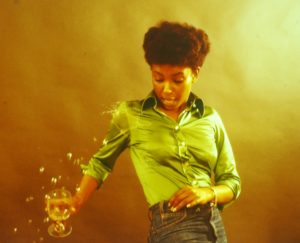Whenever possible I have worked in my own studio and darkroom – sometimes simply a cupboard or a garage, but to be able to work at any time when I have an idea or opportunity is important.
For most of my working time the supply and control of light has been the essence of photography – Kodachrome 25 and Polaroid 55 films were greedy for light.
I prefer to do my own development and printing. I loved Cibachrome but I had to depend on Kodak for the Kodachrome, I worked with Ektachrome E6 if possible. Working this way gave me more flexibility, I also felt closer to the origins of photography as a craft trade and not an “art form”. Luckily most of the photographers I met and worked with were true artists and I always admired their works. I always considered myself as a (good) photographic engineer.
Studio work was the core of a lot of my work. Commercially I found that reportage was more in demand as I could “see” and “interpret” the commission more clearly.
I did some work in other London studios with 10×8 inch Sinar with Ektachrome, but was usually happier with Kodachrome in a small Nikon.
A lot of work I tested for I did not get as I was not desperate for the job and could not avoid making jokes in the shots.
Honeywell computers asked me for a series for their magazine covers. I gave them one of little integrated circuit chip scrawling over a face like cockroaches and another of my wife, plugged into a computer and being “gagged” by it – I think the one of a computer motherboard decapitating a model lost me the job.

I think I was ahead of the time about the encroachment of computers into our lives.
Another lost job was for Laura Ashley – taking snaps of frocks was OK, but putting a bottle of booze on the table was not a good idea

The main use of studio work seemed to be then (and now) for “glamour” shots – I did a lot of this but I have never understood why it is so fundamental to photography. The models usually had indifference or even contempt for the clients. I made friends with a lot of the models and once I organised a “topless” strike at a big exhibition at Olympia. It was just for fun, no one really objected and the pay was good, but the story got a lot of column inches in the press and made centre page fold in the Daily Mirror. My client was very happy, there is no such thing as bad publicity.
I always tried to get nude shots with some strength for the model – looking at the camera and smoking a cigarette would be typical for me.

I did a lot of portfolios for models, in return I got to experiment with ideas. One idea was get a glass of white wine making a halo around the head – I knew there would be a good second shot if I was quick enough – there was only one chance for this shot.

The second, anticipated shot is what I wanted…
